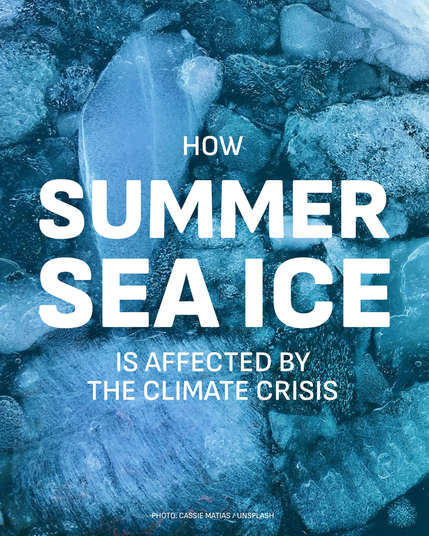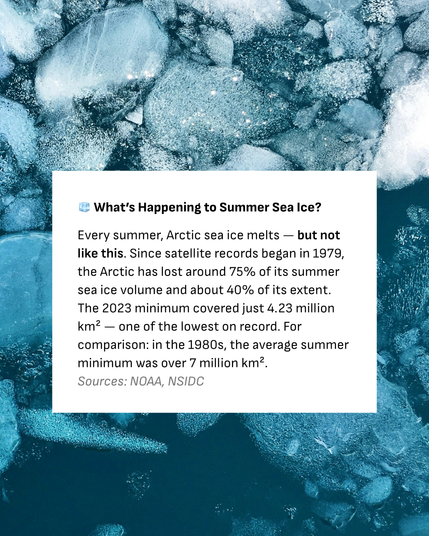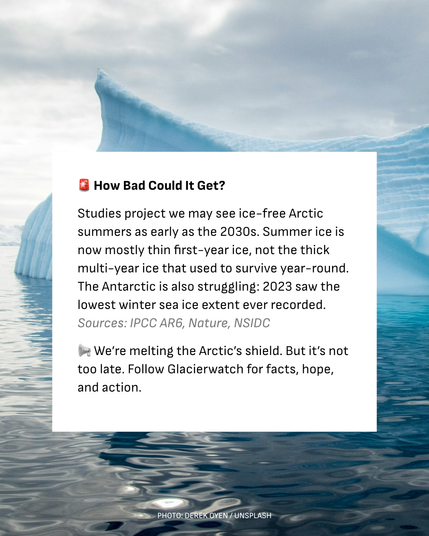🧊 What’s Happening to Summer Sea Ice?
Every summer, Arctic sea ice melts — but not like this. Since satellite records began in 1979, the Arctic has lost around 75% of its summer sea ice volume and about 40% of its extent (NSIDC, 2023). The 2023 minimum covered just 4.23 million km² — one of the lowest on record (NOAA). For comparison: in the 1980s, the average summer minimum was over 7 million km².
Every summer, Arctic sea ice melts — but not like this. Since satellite records began in 1979, the Arctic has lost around 75% of its summer sea ice volume and about 40% of its extent (NSIDC, 2023). The 2023 minimum covered just 4.23 million km² — one of the lowest on record (NOAA). For comparison: in the 1980s, the average summer minimum was over 7 million km².



